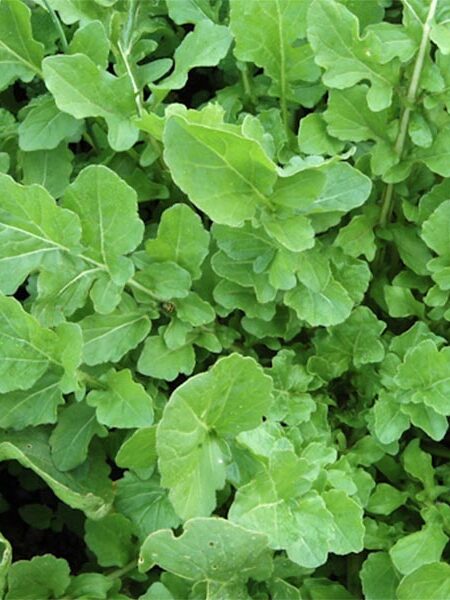OP. Compact and slow bolting endive. Strong tip burn and bolt tolerance and a self-blanching, upright growth habit. Higher yields, better self-blanching, and improved hot weather adaptation. 52 days. Photo courtesy of Johnny’s Seed.
Care: Plant 10-16″ apart in rows 16-18″ apart in sun. Harvest heads as soon as mature for best flavor.
Red, green or in between, Italian chicories (aka dandelion, endive, escarole, frisee, puntarelle and radicchio) are heritage greens that combine a sweet, flowery fragrance with an intriguingly peppery bite. Gorgeous in the garden and stunning on the plate, this bevy of Italian beauties offer myriad variations to enjoy. With scoop-shaped leaves that are perfect for dipping, these flavorful greens partner deliciously with distinctive cheeses and creamy dressings. It also has the advantage of being adaptable to a wide variety of climates, seasons and growing conditions. Radicchio generally thrives without heavy nutrient inputs, is fairly free from pest and disease issues, and holds well in the garden and in cold storage. Their spunky bite is mellowed by slow cooking; try braising in butter or splitting whole heads lengthwise and grilling until lightly caramelized. Josh Volk of Slowhand Farm offers more ideas here and explains how to get the most from these versatile vegetables here. We think you’ll be as excited as we are when you see this fantastic brochure from Osborne Quality Seeds (we’re grateful for the loan!) as well as this informative Italian poster which was created by Local Roots Farm, Johnny’s Selected Seeds and the Culinary Breeding Network, and features many of the varieties we’re growing.
Also, here’s a delightful zine, 28 pages of tasty recipes to keep you going throughout the cool months of the year, as well as a detailed history on the origin and uses of Chicory.
Cold-tolerant plants that stand in the field for harvest as needed in late fall and early winter. May overwinter in mild seasons, or die back and sprout from the root in spring for an extra-early crop. See our Fall & Winter Vegetable Guide for specific planting/harvest times & freeze-out temperatures.





Reviews
There are no reviews yet.